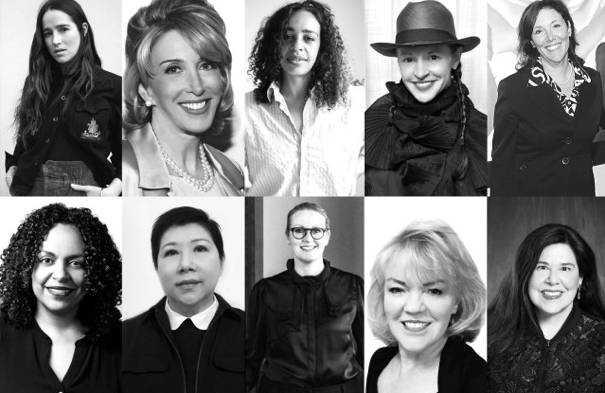By Jean E. Palmieri with contributions from Samantha Conti, Natalie Theodosi | March 28, 2019
It’s not just an old boys club in men’s wear. There are a few women who have spent nearly their entire careers designing, merchandising, presenting or selling to the guys. Here, a look at 10 ladies who have made their mark in the men’s industry and continue to stand out from the crowd.
Mary Beth Blake, president, Jos. A. Bank
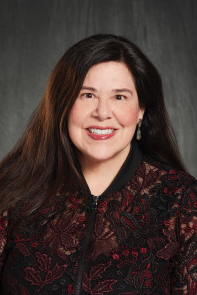 Work history:
Work history:
Blake joined Tailored Brands Inc. in 2008 as the chief merchandising officer of K&G, then served as executive vice president for Tailored Brands. She was charged with overseeing the Jos. A. Bank division in 2016. Blake started her career in merchandising with May Department Stores Co. and also spent several years with Macy’s including a stint as general merchandise manager of men’s wear for the Midwest division.
What do you find appealing about the men’s industry?
Men’s wear is undergoing transformation as men are becoming more style- and fit-aware. This sea change as well as casualization of his work wardrobe make it an exciting time to be in the men’s industry.
What are the advantages and disadvantages of being a woman in men’s wear?
One advantage is that women bring an outside perspective to the men’s clothing business. Men’s clothing is evolving, and we can help champion this evolution with our perspective on style, fit and function. And I don’t see any disadvantages of being a woman in men’s wear. Being a student of the business and being obsessed with your customer provides the insights required to help him find comfortable, impeccably fitting, high-quality clothing that makes him feel and look great.
If you could wear one piece of men’s wear, what would it be?
A black jacket. Similar to men, a high-quality black blazer is a staple item to have in your wardrobe, as it is very versatile. It can be dressed up when worn over a great dress or dressed down with denim.
Emily Bode, founder and designer, Bode
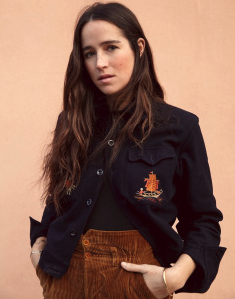 Work history:
Work history:
Bode was born and raised in Atlanta. After studying in Switzerland, she developed a folklorish eye for design at The New School, where she completed a dual degree with a BFA from Parsons in men’s wear design and a BA from Eugene Lang in philosophy. After working in the design studios of Marc Jacobs and Ralph Lauren, Bode took the plunge and created her own brand in July 2016. She was the first female designer to show at New York Fashion Week: Men’s, was the runner-up for the CFDA/Vogue Fashion Fund Award and has been shortlisted for the LVMH Prize. With her luxury men’s wear brand that expresses a sentimentality for the past by using heritage traditions of quilting, mending and appliqués in modern workwear silhouettes, Bode is creating a path for women designers within the American men’s industry.
What do you find appealing about the men’s industry?
I have always been inspired by specific histories of men’s wear, and am attracted to the notion that you can create an era-less wardrobe still with heirloom qualities. I am continually intrigued by the men’s industry, from the clients to the garments themselves. I enjoy designing for someone outside of myself and my own experience as a female. I have collected vintage men’s school uniforms and workwear for the boxy, boyish shapes and details since I was in high school. I am drawn to the idea of making men’s clothing inspired by female-centric crafts and seeing the sentimental response from the men’s customer.
What are the advantages and disadvantages of being a woman in men’s wear?
Both the disadvantage and advantage when I launched is that there simply aren’t many American female men’s wear designers. London has a few stand-out women in the industry but facing the notion that I would be the first female to show during NYFW: Men’s and not knowing the possible response from my male peers was intimidating.
If you could wear one piece of men’s wear, what would it be?
My closet has always been made up of more men’s clothing than women’s even before I began Bode. I built my entire brand around men’s workwear silhouettes, so I would have to say a classic three-pocket boxy workwear jacket. This silhouette has been a staple in my own wardrobe since I was a teen and in Bode since I launched in 2016.
Lizette Chin, president of men’s wear, Informa Fashion Group
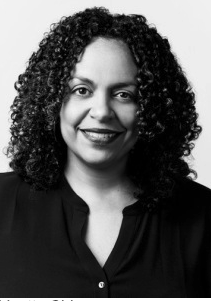 Work history:
Work history:
Chin has been in the trade show business for more than 20 years, starting with Elyse Kroll at The Collective/ENK before moving to Business Journals as advertising director, overseeing ad sales for MR Magazine, before eventually being named publisher. She spearheaded the launch of the MRket show, which she ran for eight years until it was sold to UBM. She then worked at Liberty Fairs where she launched the sartorial section, Quest, before joining Informa to head its men’s business last year.
What do you find appealing about the men’s industry?
Since I first started in this industry, I had always been able to relate to the men’s business and connect with the community. I think the seismic shifts that were happening in the women’s industry were not happening in men’s and that made it appealing to me.
What are the advantages and disadvantages of being a woman in men’s wear?
I never looked at it as an advantage or disadvantage. I just loved the men’s business, loved the people, the product and I have always tried my best to excel in whatever role I had within the business.
If you could wear one piece of men’s wear, what would it be?
I would suit it up. Back in the day, in the Nineties, I had this off-white, full trouser, double-breasted white Armani suit, it made me feel like a million bucks. I would wear it again if I could.
Paulette Garafalo, chief executive officer, Paul Stuart
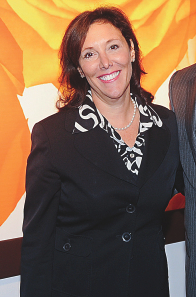 Work history:
Work history:
Garafalo started her career at Bally of Switzerland, a brand she has worked for twice, as general merchandise manager in 1980, and over the next several decades, was vice president of men’s for Salvatore Ferragamo and chief executive officer and group president of the Hartmarx Luxury Group before returning to Bally as ceo of the Americas. She left that post to join Brooks Brothers in 2010 as president of international, wholesale and manufacturing but was lured away in 2016 to take the helm at Paul Stuart. She also serves as a board member for Hooker Furniture.
What do you find appealing about the men’s industry?
The customers, the retailer partners, my colleagues. A very gentile, polite and slightly predictable industry. In addition, I have been lucky to have had great mentors throughout my career who believed in me, taught me and encouraged me.
What are the advantages of being a woman in men’s wear?
You don’t get stuck in the past. I believe it is easier to change when you are not tied to the product.
What are the disadvantages of being a woman in men’s wear?
Not being tied to the product can also work against you. There is a learning curve especially for products like tailored clothing and shoes. Not being a personal user of the products you sell requires you to listen carefully to those around you and watch trends. You can make big mistakes if you don’t surround yourself with knowledgeable smart people who you trust.
If you could wear one piece of men’s clothing, what would it be?
A suit. I am not a good coordinator and I do not enjoy shopping. I have a personal shopper because it is not my strength. It would be much easier for me if I could wear a suit every day to work. One less thing to worry about.
Erin Hawker, founder and owner, Agentry PR
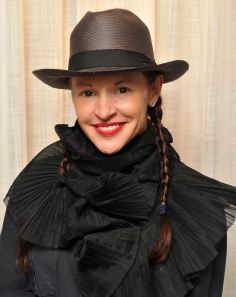
Work history:
Hawker has worked in-house and for agencies for more than 20 years. That includes such boldface industry names as Donna Karan, Diesel, East Dane, Uniqlo and Target. She applied what she learned at the big companies to emerging brands such as David Hart, Private Policy, Krammer & Stoudt and others. She also created New York Men’s Day, a twice-yearly presentation during New York Fashion Week: Men’s where these and other emerging brands are showcased.
What do you find appealing about the men’s industry?
The men’s industry is still an unchartered market. We’ve seen a lot of excitement in men’s wear globally in the last five to seven years, but we haven’t seen the American men’s industry take off into the widespread mass market yet, like we’ve seen with women’s and the fast-fashion industry. There are brands like J. Crew, Uniqlo, the Gap and Abercrombie that have been around for decades, but we are still waiting for the new breakthrough men’s brands that cater to men large-scale in the U.S. market, that are American born. I think that in itself, lends itself to a lot of ideas and energy across the men’s industry. I do also have to say the men’s industry, overall, is a very nice industry.
What are the advantages and disadvantages of being a woman in men’s wear?
The industry is changing daily. I think it used to be more of a “man’s world” in the Nineties and early Aughts. But it’s really changed so much today. We see women in power positions and working side-by-side with men in every capacity.
If you could wear one piece of men’s wear, what would it be?
A lot of pieces are interchangeable these days — style wise. We see fabulously cool women like Janelle Monáe and Tracee Ellis Ross wearing masculine suits and ties. I’m always partial to a bright-colored skinny tie.
Katie Liu, partner, Black Dog 8 Showroom and head of the U.S. fashion office for Harvey Nichols
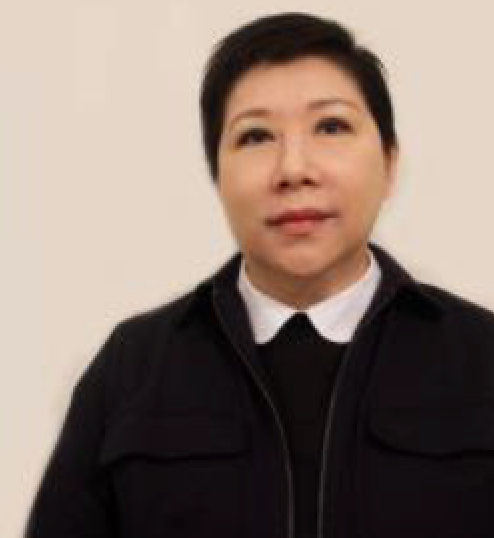
Work history:
Liu was the head buyer at the men’s concept store “Department” in Taipei, Taiwan, and has also served as vice president of Staff International, which includes Maison Margiela, Dsquared, NY Industries. She also had stints as sales director of Moschino and Jean Paul Gaultier and was an account executive at Michael Kors men’s. With Black Dog 8, she travels the world in search of creative men’s wear brands to showcase in the company’s New York showroom and at the most-influential trade shows. Among the brands represented are White Sand, Sunspel, Baracuta and Bevilacqua.
What do you find appealing about the men’s industry?
Men’s wear is flourishing, as men become more open with their style choices, we have more opportunities to explore. On a personal level, I like men’s wear as there is more camaraderie even between competition, and the friendships we develop tend to be long-lasting.
What are the advantages and disadvantages of being a woman in men’s wear?
Advantage: being a woman in an industry still dominated by men. Disadvantage: being a woman in an industry still dominated by men.
If you could wear one piece of men’s wear, what would it be?
That’s easy, a great piece of outerwear.
Karen Murray, chief executive officer, Sequential Brands Group
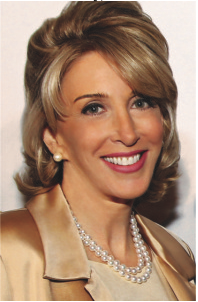
Work history:
Karen Murray has spent nearly her entire career in the men’s industry, starting with Gant as vice president of sales in 1980, moving to group president of Claiborne Men’s in 1991 and then group president of Nautica and Kipling under the VF umbrella. She joined Sequential in 2017 where she now oversees dual-gender and women’s brands including Martha Stewart.
What do you find appealing about the men’s industry?
A women’s touch with product and in leadership can make a significant difference. Also it was for many years a tighter knit community than most others. During the course of my career, I made so many great connections and built solid relationships within the industry that I still draw from today. Lastly you can be a bit more thoughtful and measured with decision-making. Speed is still important — more so now than ever — but it’s not as fast as women’s.
What are the advantages and disadvantages of being a woman in men’s wear?
I truly never experienced disadvantages, except many years ago when women were not as valued in men’s wear design and product development. I recall trying to influence design 30-plus years ago at Gant, a traditional men’s sportswear company, and suggestions back then, even in regards to color, were initially viewed as too progressive. All of that changed with time.
If you could wear one piece of men’s wear, what would it be?
A fitted blazer.
Judy Person, executive vice president and group president, Randa Accessories
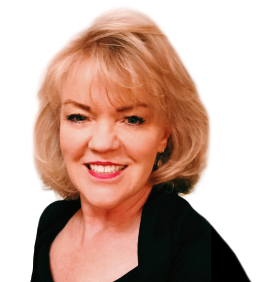
Work history:
Person began her career as an executive trainee for Carson Pirie Scott in Chicago in 1981 where she did her training in the men’s area. After graduating, she became the assistant buyer of men’s accessories, then buyer of men’s accessories. Four years later, she met Jeffrey Spiegel, the president of a small accessories company, who talked her into joining the team at Randa. Thirty-two years later, she’s still there.
What do you feel appealing about the men’s industry?
Everything about my career has been nothing short of amazing. I’ve been lucky enough to work for this incredible company: Jeffrey hires great people and allows them to do what they do, so I’m a little bit spoiled. But what I love about the men’s industry is that was built on a lot of longstanding, family-owned companies — that’s what makes the industry so great. There’s so much about those relationships that helped build the industry.
What are the advantages and disadvantages of being a woman in men’s wear?
Men’s wear is less about a trend, it’s built on a great core. I consider myself a mechanic of the business and I know all men want to be pushed: How can I wear a different pocket square that will make me look good, things like that? Women tend to take more risks.
If you could wear one piece of men’s wear, what would it be?
It would have to be a tie, but I wear scarves so there’s a bit of a connection between the two.
Martine Rose, founder and creative director, Martine Rose
 Work history:
Work history:
The London-based Rose has always been a tomboy at heart and launched her eponymous men’s wear label in 2007. She’s been gathering steam ever since, building her name around her eclectic, magpie approach to dressing: She melds tailoring with streetwear — quintessentially British youth culture references with her Jamaican heritage and a riot of colors and textures. In recent years, she’s collaborated with Demna Gvasalia on Balenciaga men’s wear and launched buzzy capsules with Napapijri and Nike. But when it comes to her own label she believes there’s strength in being a bit quieter. She’s shown her collections selectively, opting for everything from intimate presentations to closing off a street in Camden Town to host a runway show. She’s planning to make a return to the London schedule in June.
What do you find appealing about the men’s industry?
In some ways, when I started, it was easier to have a men’s wear business because it was less crowded. Obviously it’s getting more popular now, but I think trying to crack the women’s market is maybe harder. I think in the end it’s just my natural aesthetic. I wear boys’ clothes myself and I’ve always been a bit of a tomboy. My natural instinct and my taste always led me to men’s wear.
What are the advantages and disadvantages of being a woman in men’s wear?
As a female in a predominantly male industry, there are challenges. The fact is that it is just tougher for women in general, but in my case, I haven’t come across any difficulties with the fact that I’m a woman designing men’s wear. It generated more interest actually; people are curious about how it came to happen.
If you could wear one piece of men’s wear, what would it be?
I really love sportswear, so I always wear tracksuits. I like the combination of sportswear with smarter pieces and when things feel a bit awkward. So even if I’m wearing a skirt or something that is girly or feminine, I’ll pair it with something boyish, say either trainers or a tracksuit top. There always has to be an element of men’s wear in what I wear.
Kathryn Sargent, master tailor and founder, Kathryn Sargent Bespoke Tailoring in London’s Mayfair

Work history:
Sargent got her BA Honors in Fashion Design from University of the Creative Arts in the U.K. While still at university, she worked for the London-based tailors Denman & Goddard, then spent 15 years working full time at Gieves & Hawkes, where she trained in all the components of making a suit. She rose to become head cutter, the most senior role in the cutting room, before leaving to start her own business in 2012. About 70 percent of her clients are men and the rest are women. She operates from her premises on Brook Street in Mayfair.
What do you find appealing about the men’s industry?
I was brought up on James Bond, the Sixties Mod scene, “The Man from U.N.C.L.E.,” and all the spy films where suits were used as a part of the actor’s character. Also, my father used to wear suits or blazers for work, and he even did the gardening in proper trousers and a jacket. He used to polish his shoes every Sunday night and he really took care of his clothes. I think it left a lasting impression because I was like, “That’s what men should be like.” I found tailoring really appealing because it’s complex. What are the components that go together to make a suit? The end result looks quite simple, but if you actually look at the pattern for a suit — and all those different components — it’s quite complex. I love the textile aspect of it as well, and I have roots in Yorkshire, a center for the cloth industry and for tailoring. Then when I saw Savile Row, something there resonated with me. Working at Gieves was incredible. The late Robert Gieve, the fifth generation of the Gieves & Hawkes family, was there when I started. He really inspired me and taught me so much about working with clients, the secrets of the trade. It was a fantastic training and education.
What are the advantages and disadvantages of being a woman in men’s wear?
The advantages are that I bring something new. I’ve got a different background [from the traditional tailors] and a different eye. And I think I’ve got a feminine touch. I’m very empathetic, and I like to really understand what the customer is looking for. I think there is an arrogance with some traditional cutters. I think also my eye is different because I come from an art background. The disadvantage is that it has been quite tough — especially when I was younger. As a woman, you have to work a lot harder than your contemporaries to prove yourself. I actually did apply once for a job with another tailor and they interviewed me, but they said they would never employ me because I was a woman. They asked what I would do if I had children. I had to be career-focused in order to achieve, and that came first before my relationships and my family and everything. I think that was probably a disadvantage.
If you could wear one piece of men’s wear, what would it be?
Today, I’m wearing a jacket that is similar to a Black Watch tartan, with a burgundy going through it, and brown horn buttons. It’s single-breasted with a notched lapel. The trousers are black wool. It’s easier for me to wear trousers because I’m bending and measuring and fitting people, so I live in trousers most of the time. When I started, I used to think I had to dress more like a man, in matching two-piece suits, but now I wear tailoring in a bit more relaxed style. I’ve still got two-piece suits, but I might wear separates, lovely tweed jackets with trousers. I am absolutely mental for cloth, so when new things come out, I get so excited. I think that tailoring can be more relaxed and, also, you can make it feminine. Quite often I wear a tailored dress and jacket and I feel very feminine.
Editor’s note: Jean E. Palmieri has spent 33 years covering the men’s industry for Fairchild Publications, rising from a textile reporter to executive editor of DNR and now serves as senior editor of men’s for WWD.



